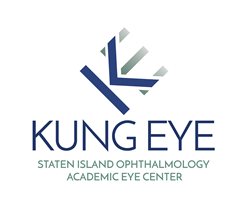
Kung Eye Center
We’re very excited to be chosen as the first practice in New York or New Jersey to offer this exciting technology to our cataract patients
NEW YORK (PRWEB)
March 13, 2020
With locations in Staten Island, NY and East Brunswick, NJ, Kung Eye Center is the very first practice in both states to offer the Light-Adjustable Lens (LAL) by RxSight™ to cataract patients.
The Light Adjustable Lens is the first intraocular lens (IOL) that allows surgeons to make adjustments following cataract surgery, and it is the first FDA-approved IOL of this nature. The LAL is a three-piece silicone lens that is implanted just like a monofocal lens implant, except the LAL is made with a special photoreactive silicone, permitting surgeons to adjust a patient’s prescription after implantation by using a specialized Ultra-Violet (UV) light or Light Delivery Device (LDD).
This technology is ideal for patients undergoing cataract surgery that had previous vision correction surgery such as LASIK, PRK or RK. It is also ideal for patients that have corneal abnormalities and for patients seeking monovision or a more precise visual outcome following their cataract procedure.
In an FDA study which included 600 patients, those who received the LAL lens were twice as likely to achieve 20/20 vision without glasses, compared to those who received a standard monofocal lens.
Cataracts occur when the eye’s natural lens becomes clouded and rigid, blurring and darkening the vision. The only treatment option for cataracts is to remove the clouded lens and replace it with an artificial lens implant. While cataracts are one of the leading causes of blindness, the removal of cataracts is one of the safest and most common surgical procedures around in the world. The Light Adjustable Lens technology in cataract surgery helps improve visual outcomes by allowing surgeons to fine-tune and completely customize the patient’s refractive outcome after the cataract is removed and the LAL lens is implanted.
“We’re very excited to be chosen as the first practice in New York or New Jersey to offer this exciting technology to our cataract patients,” said John S. Kung, MD– Medical Director at Kung Eye Center.
Dr. Robert Grubbs of California Institute won the Nobel Prize in Chemistry in 2005 for his theory of olefin metathesis, which is used in LAL technology.
Typically patients will return to their eye doctor to be prescribed reading glasses in order to see clearer following cataract surgery. But with this new technology, ophthalmologists are able to take the post-operative measurements and then utilize a special slit lamp equipped with a UV light. This causes the LAL to change shape in response to the light, improving vision more precisely to the patient’s needs. In just two to four treatments that only last 90 seconds, most patients are able to see very well at their preferred visual settings. For patients that choose monovision, most of these patients can reduce or eliminate the need for glasses or distance, intermediate and even up close vision.
Kung Eye Center will be performing its first LAL case on March 14th . The patient will wear special UV blocking glasses after the procedure. After a few weeks the patient will be adjusted using the Light Delivery Device (LDD) to the patient’s preferred prescription. The patient can have up to 3-4 adjustments before Dr. Kung locks in the final patient prescription.
About Kung Eye Center
Led by John Kung, MD, the Medical Director of Kung Eye Center, Kung Eye Center has played a key role in the development of ophthalmic surgeries such as LASIK and Laser Cataract Surgery. Dr. Kung has invented instruments used widely in the field, and authored “A Patient’s Guide to LASIK,” a resource that explains the complex procedure, as well as its benefits and risks, into easy-to- understand terms. He has published studies on the safety of vision correction surgery, and served as a consultant to the Canadian military. Fellow ophthalmologists often observe Dr. Kung at work in the operating room to learn new techniques and study new equipment in action. Dr Kung is an invited faculty member teaching new cataracts surgery techniques at the largest cataract only surgical meeting in the United States as well as an advanced phaco wet lab instructor at American Society for Cataract and Refractive Surgery.
Share article on social media or email:
